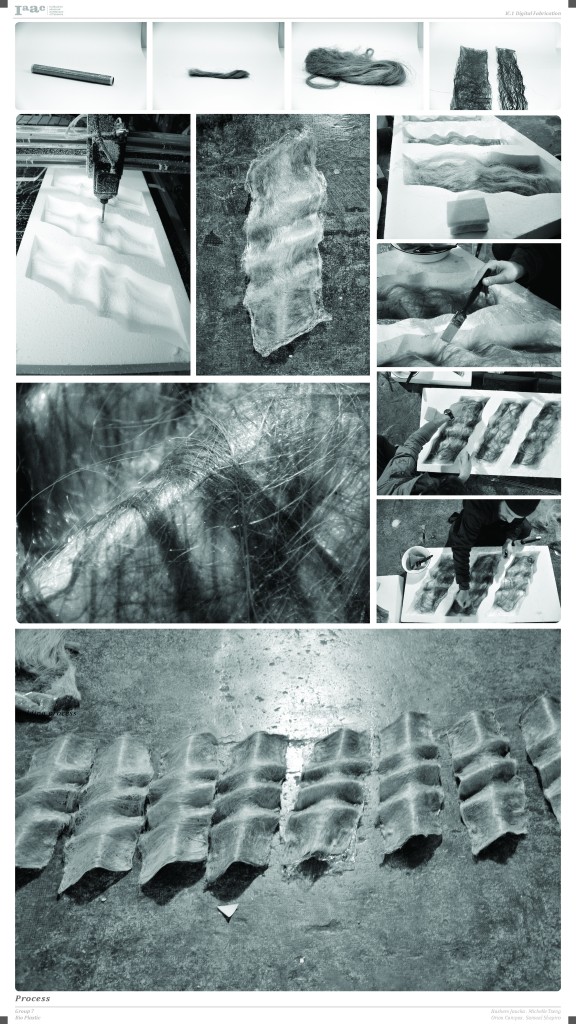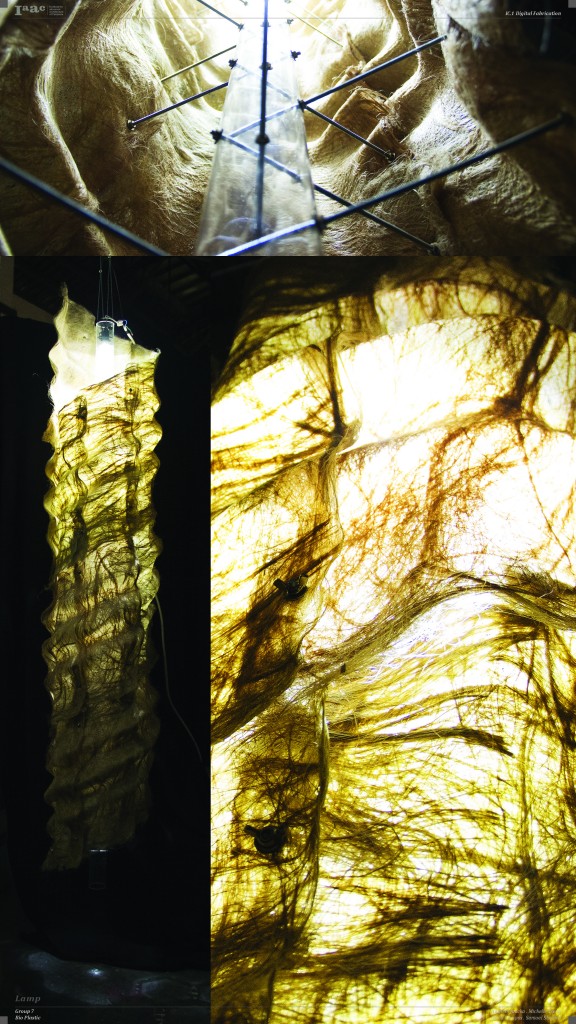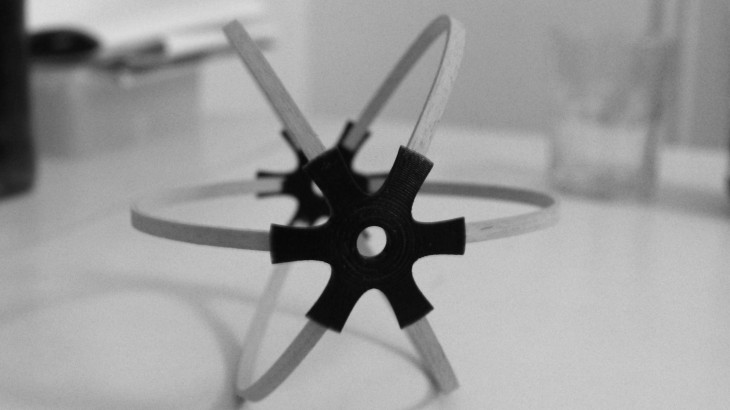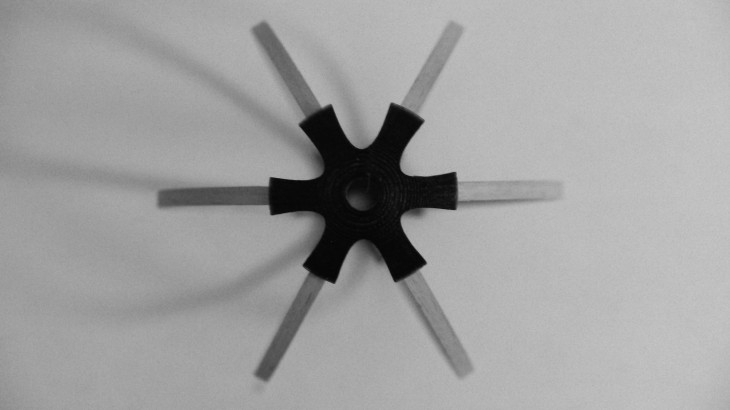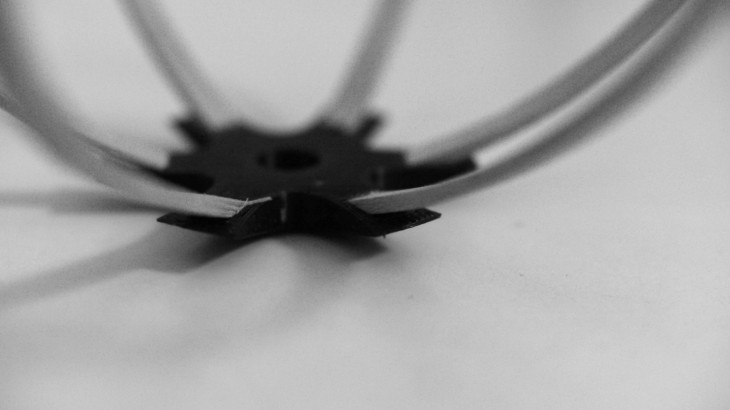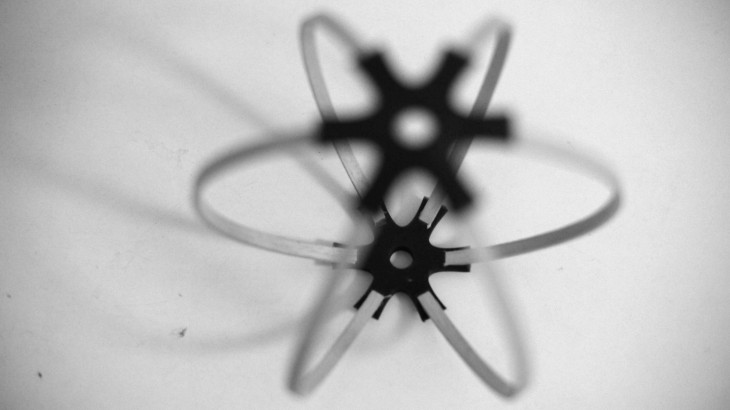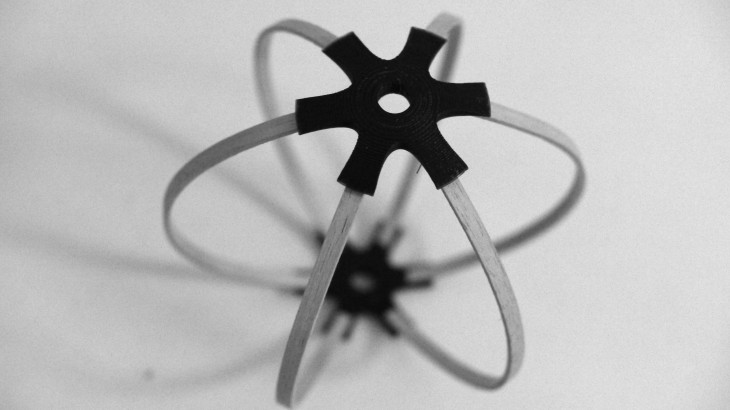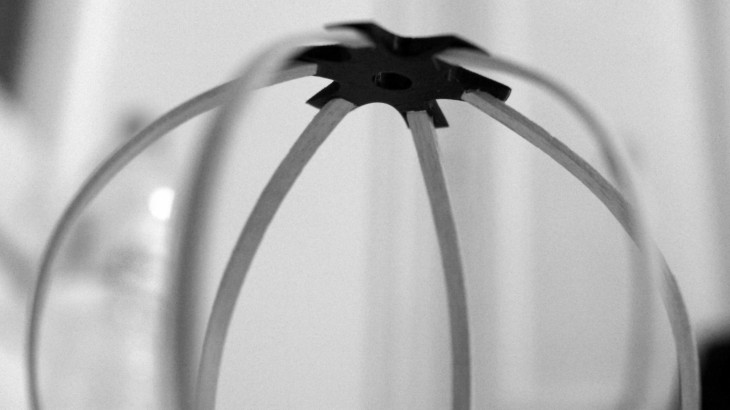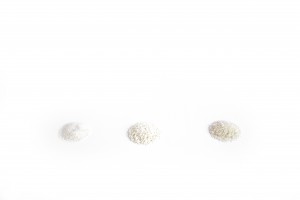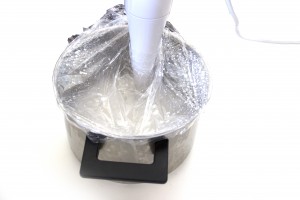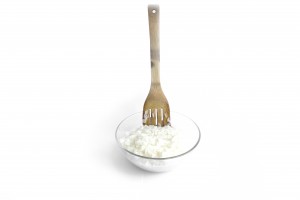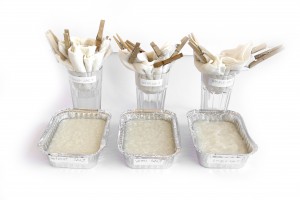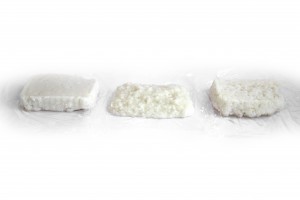Category Archives: Michelle Tzuman Tseng
Bio Plastic Lamp
3d printed joints
Bio Plastic Research
The research was based on the project made last year in iaaC, which explored the production methods and material behaviors in plastic biodegradable systems. It investigates DIY biomaterial production and passive reconfiguration processes to create components for a dissolving architecture.
The Bio Plastic research was made by Sviatlana Matushko, Mardet Gebreyesus, Dhwani Patel, under the tutoring of Areti Markopoulou and the assistance of Alexander Dubor and Moritz Begle.
At this class we tried through a series of tests with different tools of digital fabrication machines and through a series of experimentation of ways of assembling and making the materials to be transformed later, into a lamp.
Salty Rice Clay
MATERIAL DESCRIPTION
Salty Rice Clay made by equal- ratio mixing salt and Thai glutinous rice at room temperature.
The glutinous rice creates the super-strength mortar, this organic-inorganic compound was made possible by amylopectin, a type of polysaccharide, or complex carbohydrate. The amylopectin combines with the inorganic calcium carbonate from the lime to form a mortar that has more stable physical properties, greater mechanical strength. It has been found more stability by adding the salt (sodium chloride) with glutinous rice to creat a material with ductility, but also the ability to maintain a certain shape.
EXTRACTION PROCESS
1. Blend the rice and sea salt and filter it into a container as the rice clay.
2. Boil the rice with sea salt then stir until it become a paste.
3. Mix the salty rice clay with the rice paste.
4. Test the potential of the salty rice clay.
Link- http://vimeo.com/109538291
BASIC PROPERTIES
Compressive Strength (N/M2)-
Tensile Strength (N/M2)-
Stiffness (N/M2)-
Density (KG/M3)-
Carbon Footprint (Average, KGCO2E/KG)-
Recyclable- YES
Laser- NO
Small Laser- NO
Milling-
3D Printing- YES
Advantage In The Context Of Digital Fabrication
Salty Rice Clay is low cost, translucent and totally organic. It can be post processed for increased strength and durability by mixing with other fabric.
MATERIAL SUPPLIERS
Alimentacion Fei He
C/Tamarit 148 TD 2, 08015 Barcelona
934262985
PRICE (€/KG, CHEAPEST FOUND IN BCN, 2014)
3€/KG
MATERIAL PHOTOS
MATERIAL REFERENCE PHOTOS WITH INFOS AND LINKS
Link1- Sticky rice holds ancient Chinese buildings together
http://news.nationalgeographic.com/news/2010/06/100608-sticky-rice-mortar-china-science/
Link2- 3D printing salt
http://www.3ders.org/articles/20130413-exploring-7-materials-with-3d-printing.html
Link3- Rice paper mache
http://seekingwings.wordpress.com/2012/05/07/rice-paper-mache/


